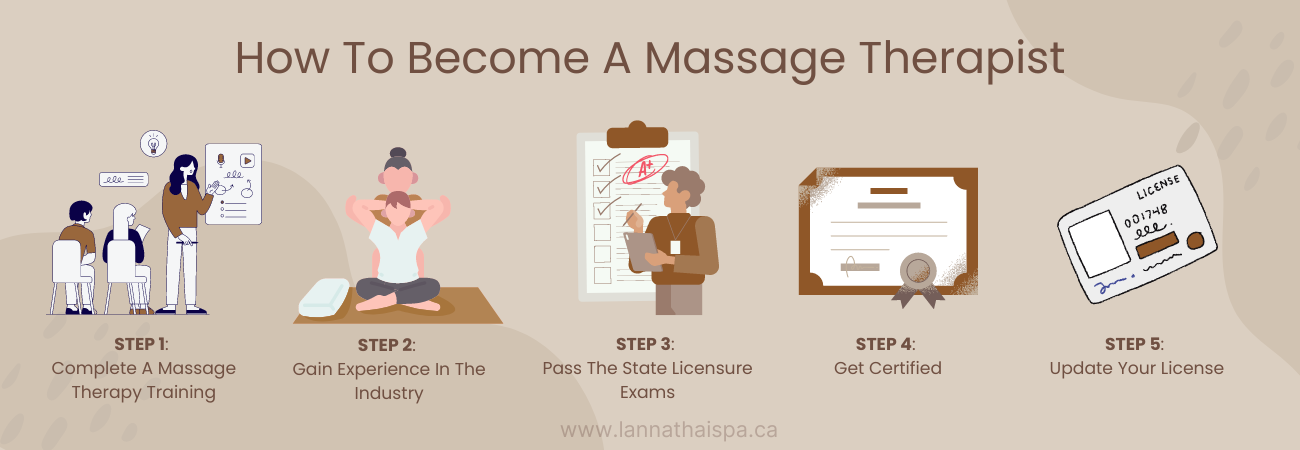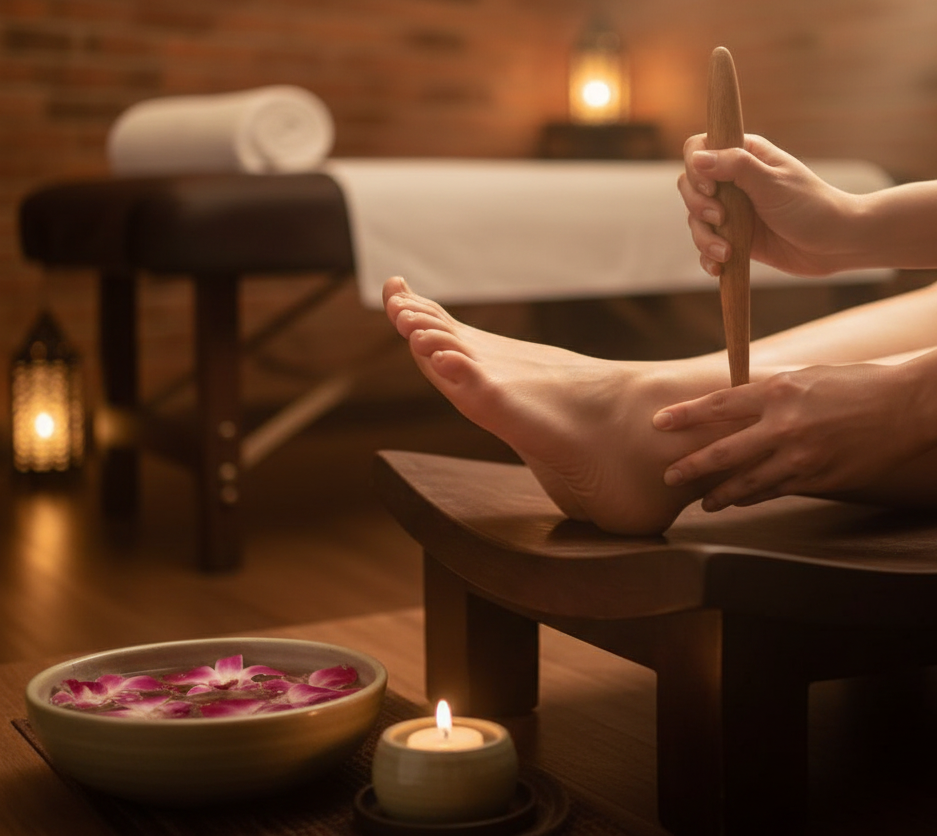Photo Credits to www.indianaacademyofmassage.com
Wondering how to become a massage therapist? Pursuing a career in massage therapy can be both rewarding and fulfilling, especially if you have a passion for holistic wellness.
If you’re interested in becoming a massage therapist, it’s important that you have a strong desire to help people, have good listening and problem solving skills, and are in good physical health. In this article, let’s explore massage therapy as a career – here’s a step-by-step guide to help you navigate the process and start your journey in this holistic field.
How To Become A Massage Therapist
Massage therapy is a diverse field for professionals who are interested in holistic and complementary medicine. There are a number of steps you need to take in order to pursue this career path. The good news is that it doesn’t take long to become a certified massage therapist.
It depends on the type of massage therapy program you choose to attend and the credential you want to achieve, but a certificate program usually takes anywhere from six to 12 months, while an associate degree can take around two years. You’ll need to have at least a high school diploma or GED before starting a training program.
Once you’ve completed specialized training, passed the licensure exam, and gained industry experience, you’ll become a certified massage therapist. Let’s explore the steps in more detail.
Step 1 – Complete A Massage Therapy Training
The first step is to enroll in an accredited and state-approved massage therapy training program. Each state has different training and education requirements for massage therapists to be able to get a license and practice professionally, so it’s important to check the requirements where you live or where you plan to practice.
Look for a training program that offers massage therapy and application coursework and training, anatomy, medical terminology, and physiology. You can also opt to take business management and marketing courses if you plan to open a private practice in the future.
As mentioned, you can complete a massage therapy program in six months if you attend full time, but can take longer if you take it part time or if you take it in a state where there are many requirements. These programs, which consist of both academic and clinical work, aim to prepare students for licensure exams and board certification.
Step 2 – Gain Experience In The Industry
You will be required to complete about 330 to 1,000 hours of clinical training during the program. Again, the number of professional experience hours required to take the licensure exams varies per state, so it’s best that you check the requirements in your state.
The school usually helps their students find internships, as these experiences are an integral part of the program. Here you will gain industry experience supervised by a licensed massage therapist where you can learn important skills and techniques that can be applied in your profession later on.
Step 3 – Pass The State Licensure Exams
Once you’ve completed your massage therapy training program and rendered sufficient clinical hours, the next step is to check the requirements of your state regarding licensure exams. Some states accept or require the exam for Board Certification in Therapeutic Massage and Bodywork (BCTMB) offered through the National Certification Board for Therapeutic Massage & Bodywork (NCBTMB).
However, most states use the Massage and Bodywork Licensing Exam (MBLEx), which consists of 100 multiple-choice questions that students need to complete in two hours. MBLEx covers topics including:
- Anatomy and Physiology
- Kinesiology
- Pathology
- Benefits
- Client Assessment
- Ethics
- Practice Guidelines
You will pass the MBLEx with a minimum score of 630. If you fail, you can take it again after 1 month.
Step 4 – Get Certified
After passing the exams and receiving your license, it’s time to consider certifications. Specialty certifications are voluntary but they will allow you to demonstrate your expertise in a specific type of massage, such as deep tissue, prenatal massage, sports. These additional credentials can enhance your skills, broaden your professional opportunities, increase your earning potential, and attract a wider range of clients seeking specialized services.
Step 5 – Update Your License
Once you’re licensed, certified, and practicing professionally, the only thing left to do is to keep your license updated. Licensing organizations generally require massage therapists to take continued education courses at a state-approved school. For example, those with a BCTMB license must go through 100 hours of clinical experience and 24 hours of continuing education in order for their license to get updated.

Conclusion
Now that you know how to become a massage therapist, it’s time to put your plan into action and start working towards your certification and licensure. Later on, you can even open your own practice and become a business owner.
By following these steps, you’ll be well on your way to a rewarding career in holistic health and wellness, helping others feel their best through the power of therapeutic touch.



